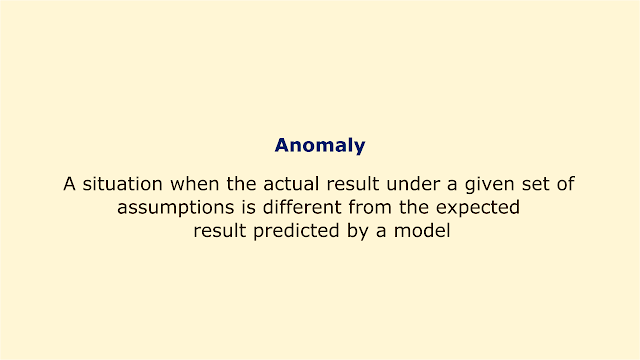 |
| Image: Moneybestpal.com |
A financial anomaly is a circumstance where the predicted outcome by a model differs from the actual result under a specific set of assumptions. An anomaly shows that a certain premise or model is unreliable in real-world situations.
The efficient market hypothesis (EMH), which contends that prices already accurately reflect all relevant information and cannot be arbitraged, is frequently called into question by anomalies, which can develop, vanish, and then reappear with almost no prior notice.
Anomalies in finance can take many various forms, including pricing and market abnormalities. Market anomalies, such as the small-cap impact, the January effect, the low book value effect, and the momentum effect, are aberrations in returns that defy the EMH. Price anomalies, such as the dividend puzzle, equity premium puzzle, and volatility puzzle, occur when an item, such as a stock, is priced differently from how a model predicts it will be valued.
Some possible explanations for anomalies in finance are:
Finance anomalies are important because they may present chances for investors to generate excess returns or enhance the performance of their portfolios. Anomalies are difficult to spot, take advantage of, or foresee, though, so they also present difficulties and hazards for investors. Investors should exercise caution and diligence when dealing with financial abnormalities as a result.
Anomalies in finance can take many various forms, including pricing and market abnormalities. Market anomalies, such as the small-cap impact, the January effect, the low book value effect, and the momentum effect, are aberrations in returns that defy the EMH. Price anomalies, such as the dividend puzzle, equity premium puzzle, and volatility puzzle, occur when an item, such as a stock, is priced differently from how a model predicts it will be valued.
Some possible explanations for anomalies in finance are:
- Behavioral factors: Investors could behave irrationally or emotionally, which could cause mispricing or an exaggerated response to the news. Investors might demonstrate loss aversion, herd behavior, overconfidence, or anchoring bias, for instance.
- Data mining: Researchers may uncover fictitious links or patterns in weak or meaningless data. For instance, researchers can choose a sample size, time frame, or a number of variables that are all excessively small.
- Market frictions: Investors might be prevented from taking advantage of anomalies by expenses or other obstacles. For instance, there can be transaction charges, taxes, liquidity restrictions, limitations on short sales, or regulatory concerns.
- Model misspecification: There may be errors or gaps in the models that are used to forecast or explain market behavior. For instance, the models could leave out crucial elements, make false assumptions, or have measurement flaws.
Finance anomalies are important because they may present chances for investors to generate excess returns or enhance the performance of their portfolios. Anomalies are difficult to spot, take advantage of, or foresee, though, so they also present difficulties and hazards for investors. Investors should exercise caution and diligence when dealing with financial abnormalities as a result.
